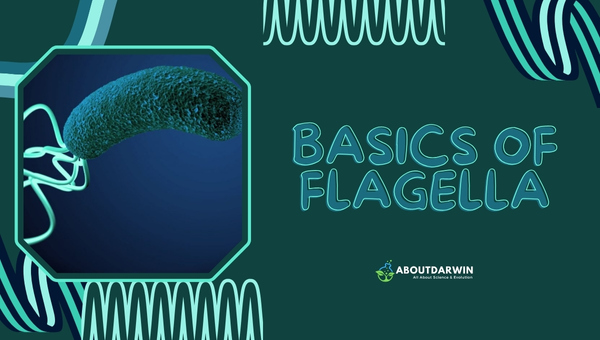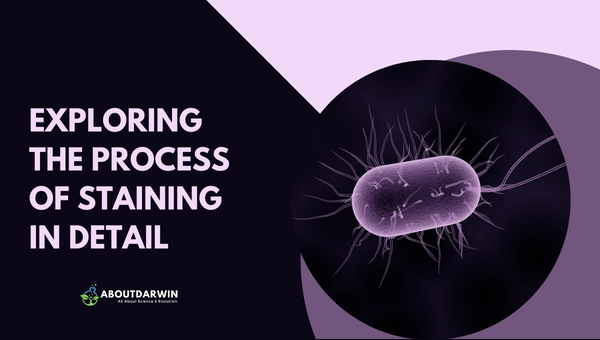Physical Address
304 North Cardinal St.
Dorchester Center, MA 02124
Flagella are fascinating structures. They’re like the teeny, tiny outboard motors of the microscopic world, designed to propel organisms from one place to another.
You typically find them in the realm of bacteria and single-celled organisms, acting as intricate propulsion systems. These structures may be microscopically small, but their influence on cell motion and environmental interaction is colossal.
In essence, a flagellum is a whip-like appendage attached to the cell body. Is it a primary function? To instigate locomotion.
However, their position can also extend beyond simple cellular movement to play roles in other biological realms, such as sensory pathways that respond to changes in temperature and chemical composition surrounding the cell environment.
Flagella are more than just biological propellers; they’re an integral aspect of microbial existence.
Contents
So, you want a basic understanding of flagella, huh? Well, think of it like this. Just as a ship has its rudder to steer and navigate its path, certain microorganisms also require such guidance. That’s where flagella come in!

These are long whip-like structures sticking out from the body of organisms. Imagine thin and elongated tails that help creatures swim around their habitat with ease. Cells can have one or many flagella, depending on their type.
And here’s the fun bit: these little propellers twirl around much like a corkscrew, helping the organism to swim and change direction when needed.
Now that we have the basics down, let’s dive deeper into why these tiny extensions are so vital for some microscopic critters’ survival. The primary job for these little guys is locomotion – a fancy science way of saying ‘moving around.’
They help bacteria and other single-celled organisms navigate through whatever fluid environment they call home – may it be water or even your intestines (surprise!).
However, their role doesn’t stop there. Not only do they whirl around to propel the organism forward, but they also can sense some chemical changes in their environment through chemotaxis (another fancy science term), acting kind of like an internal GPS to direct cells towards nutrient-rich zones or away from harmful ones.
So yes, whether it’s moving about freely or keeping track of food supplies, flagella are nature’s excellent multi-functional navigation system at microscopic levels!
Also Read: Enterobacter Cloacae: Understanding the Biochemical Test
How many types of flagella are there, you ask? By and large, there are three main types – Monotrichous, Lophotrichous, and Peritrichous. Think of them as the different models in the world of flagella.
The monotrichous flagellum is like the lone ranger – organisms with this type have a singly attached solitary flagellum at one end. An example? The bacteria Pseudomonas aeruginosa can cause different types of infections.
Next up is the Lophotrichous model, where organisms flaunt multiple flagella but are grouped at one or both ends – like decoration on a Christmas tree! A type of bacteria, Helicobacter pylori, associated with stomach ulcers, uses this multiple-tail system for its movement.
And finally, we’ve got the Peritrichous type where they’re dealing with flagella “all over.” Their entire body surface is covered in these whip-like structures, just like E. coli bacteria.
Now that we know what they look like, let’s talk about why these different variations matter. As you might’ve guessed by now, each type means another way to move around!
Let’s dive into the enigmatic world of microscopic locomotion and focus on the whirling appendages that propel bacteria and cells through their aqueous surroundings: flagella. These fascinating biological structures are not just static filaments; they are complex machines vital for movement and environmental sensing.
In this exploration, we’ll unravel the intricate details of flagellar anatomy and function, highlighting why these tiny propellers are marvels of cellular engineering.
When it comes to flagella, it’s not just about the abstract shape or length – a lot is going on inside! It’s kind of like a chocolate-covered cannoli; sure, the outer layer might be all you initially see, but there’s more to explore beyond that delectable coating. Let’s peel back layers like one would on an onion and examine the integral parts from base to tip.
Starting at the very bottom – or base – we have something called the basal body. This part is embedded within the cell wall and acts as an anchor for the flagellum. Then comes the hook structure, which is a flexible joint connecting the basal body with the rest of the flagellum – forming an elbow of sorts.
Moving upwards along our ‘cannoli,’ we encounter what’s known as a filament – this is the longest part, making up most of its length. It comprises several identical protein subunits called flagellin arranged in a spiral manner, giving flagella its distinctive whip-like shape.
Flagella, the unique whip-like structure that facilitates the movement of certain cells and unicellular organisms, contains several key components:
Each component plays an important role in enabling locomotion or signaling functions aligned with everything from cellular migration to fertilization.
When we think about single-flagellated organisms, one of the first examples that comes to mind is Pseudomonas aeruginosa—an interesting little bacteria with a growth advantage in different environments, ranging from soil to human skin.
These guys equip themselves with a single polar flagellum that swivels around like an outboard motor, helping them navigate through their surroundings.
Another interesting character under this category would be Vibrio cholerae – the drama queen responsible for causing Cholera in humans! Their whirling flagella are highly dynamic, offering them a speedy escape response from unsuitable habitats like acidified waters.
Next up, let’s switch over to organisms featuring more than just one flagella! Here, we come across multiple dangerous but fascinating beings as well. For instance, take Helicobacter pylori. This bacterium has several flagella at its ends, which helps it swiftly maneuver through the mucus lining of your stomach and anchor itself securely, avoiding easy expulsion.
And how can we forget about our everyday organism, E.coli? This little critter flaunts numerous flagella over its body that spin collectively when it wants to move in a straight line and switches into ‘tumble’ mode by rotating them individually when it needs to change direction – all these performances right within our gut!
Also Read: Unraveling Staphylococcus epidermidis: Biochemical Tests & ID

As much as we love to talk about them, distinguishing flagella under a standard microscope can be like finding a needle in a haystack because of their negligible size. So, how exactly do scientists lay their eyes on these little structures? Welcome to the world of staining!
Staining, in simple terms, is kind of like adding eyeshadow to your skin to make your eyes pop. It makes use of specific dyes that bind to components of flagella, making them more visible against the microscope backdrop.
The catch here is to use solutions that artificially increase the diameter of flagella without distorting its true nature – allowing us to observe these marvelous motility machines right in action!
Now, let’s look at how these staining procedures light up our tiny submarines. Preparation usually initiates with getting a clean slide and preparing smears from bacterial cultures followed by air drying and gentle heating – all this just enough for our micro friends to hold onto their ‘dance floor.’
Then comes applying specialized stains having substances that selectively bind with different parts of flagella, making them appear thickened or stand out clearly under a microscope. This flood coloring session is followed by careful washing off excess stains and careful blot drying.
Once our art project dried up, time peep through looking glasses loupe visualize ‘magnified’ flagellum against the contrasting background – Remember rules magnification work freeway observation system with sharp focus patience!
So, we’ve dyed around secured some colorful images, but what do they mean? Interpretation requires a bit of knowledge about normal structure orientation.
A well-executed stain will showcase fine thread-like elongated strands extending out from cells that are non-uniform and haphazardly sticking out – voila! That’s Flagella!
In some cases, densely packed organisms or improper staining techniques might leave confused deciphering flagella and other cellular structures, hence making it crucial to follow standard procedures and know the expected results for meaningful interpretations.
Irrespective of challenges, successfully staining and observing these whip-like structures could end up leaving us spellbound and wondering how nature microscaFrequently Asked Question.
Also Read: Citrobacter Freundii: Biochemical Tests & Identification
Cilia and flagella are long extensions commonly found on the surface of eukaryotic cells.
Flagellum is a lash-like appendage that protrudes from the cell body of certain bacteria.
The flagellar filament is composed of a single protein, flagellin.
Tubulin (the primary component of microtubules) has not been found in any prokaryote, and DNA has never been seen in flagella.
Flagella is a structure that exists in both eukaryotic and prokaryotic cells.
In conclusion, the universe of flagella is as diverse and remarkable as the microscopic organisms they propel. From their defining physical attributes to their different types and functions, flagella underscore not just ingenious natural design but also how intricate simplicity can be!
Their seemingly understated presence plays a pivotal role in ensuring survival in various habitats and forms an essential part of global ecology.
The exploration into flagella doesn’t end here. From the staining procedure leading us to unearth this hidden world to its significance in scientific research for potential medical applications – it all underlines the profound impact these tiny, whip-like structures have.
Flagella serves as a perfect reminder of science’s wonderment: complex creations can emerge from nature’s simplest building blocks!